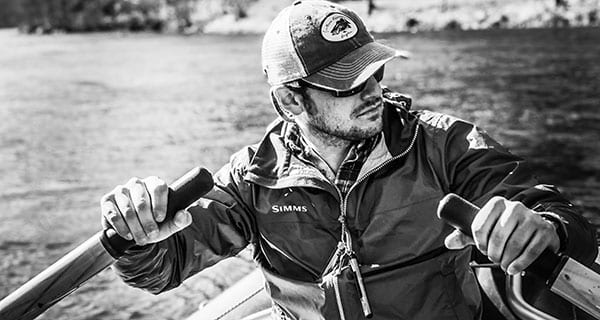One of the first things that any so-called native Appalachian fly fisherman is ever taught is the importance of being stealthy when approaching fish. The tight, clear wild trout streams of Southern Appalachia call for this approach in order to find success. Of course, how educated trout are can play a key role in how much trout perceive human presence as a large enough threat to immediately run for cover, but that is a topic for another time. This article will focus mostly on some tips that will hopefully enable you, as a fly angler, to be able to land a few more fish on your next outing.
First, it’s important to understand that trout have incredible senses of “hearing” and sight. Rightfully so, as trout are as much of a prey animal as they are a predator. I’ll spare the complex biology that makes it possible for these critters to survive in the wild (but encourage you to go read about it if you’re interested). To put it in simple terms: we as anglers have to understand that our initial presence is unnatural to fish in a stream. Their lateral lines in addition to complex hearing structures in their heads, can sense vibration and sounds in the water at a remarkable capacity. This isn’t so surprising once you understand that sound waves travel four times as fast under water as it does in the air. I even read one study showing that trout can sense the vibrations of people walking at a normal pace ten feet from a riverbank.
In addition to their hearing, trout also have impeccable eyesight, mainly due to the angles at which their eyes are facing along their head, leaving their only blind spot directly behind them. This is why we, as fly fisherman, are usually taught initially to fish upstream as much as possible. This cone of vision extends for around 320 degrees with the exception of this blind spot. Their eyes have adapted, at least to fisheries biologists’ understanding, to perceive contrast which enables them to detect otherwise small flies on the surface of the water paired against the backdrop of the sky.
While it’s inevitable that you’re going to spook fish, there are ways that you can limit the chances of that happening while on the water, which don’t involve you spending money on new camo waders or matte colored rod blanks. Really, there are three very simple things that I teach my clients who are trying to become better fly fishermen.
First, understand where you are in relation to the fish and position yourself accordingly. Use the natural cover that is available to you which can be in the form of a big boulder, fast choppy water, tree limbs, tall grass, or simply just kneel down to conceal your profile from the fish. It should also be noted that your movements should be done as quietly as your ability allows.
The other, critical component to all of this actually comes down to your clothing. Remember what I mentioned about contrast? Trout are constantly seeing their natural environment and the surrounding riverbanks in natural hues (think green, gray, brown, etc). While I’m sure that whoever bought you that bright salmon colored fishing shirt for Christmas meant well, it’s probably better worn to social events rather than fishing for trout. Your chances of keeping trout from spooking are far better when wearing drab, natural colors.
On a final note, while I don’t think it’s always necessary, it does help tremendously to use as long of a rod as you can get away with. I think it’s estimated that for every one inch of rod length, it increases the anglers reach by almost a foot when implementing high-stick techniques. Keeping as much distance between you and the fish as possible can greatly increase your chances of success the next time you’re on the water.
Ethan Hollifield is a member of a conservation organization called 2% For Conservation and a guide for Southern Appalachian Anglers
